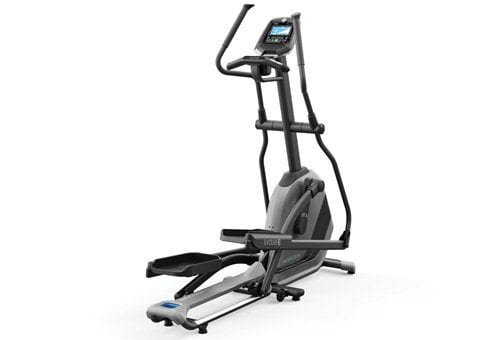The Importance of Cooling Down After Your Exercise
This entry was posted on November 8, 2018.

Everybody knows it’s important to cool down after a work-out, but lots of people still skip this part. So, what exactly is the importance of cooling down?
Is there any?
You’re in Shreveport, using your favorite exercise equipment at home, you finish your work-out—but what should you do next? Is it ok to just drop the weights and plop down on the couch, or should you take time to get in a proper cool down period?
Read on to learn more about cooldowns and whether or not they are as important as you’ve heard.
How to Cool Down After Using your Sports Fitness Equipment
First, let’s define our terms. What is a formal cool-down? The basic idea is to return the body to its resting condition gradually, instead of just abruptly stopping. That means doing whatever types of movement you’ve been doing—moving the same muscle groups—but in a slower, gentler way for about 20 minutes after the main part of your workout is over. Gradually decrease the intensity until you’re ready to stop.
For example, if you’ve been pedaling hard on a stationary bike for 40 minutes, shift to a moderate pace for ten minutes, then drop down to easy pedaling for another ten before coming to a complete stop.
A cool-down is the exact reverse of a warm-up, and we’re told the two are important for the same reasons—to lessen stress to the heart and other organs, to reduce the chance of injury during exercise, and to minimize pain and stiffness the next day.
One of our favorite Shreveport exercise machines to cool down with is the Horizon Evolve 3 Elliptical Machine. This exercise equipment is great for home gyms and is low impact making cooldowns a breeze.
Cooling Down: The Case Against
Turns out, most of the reasons we’re given for cooling down don’t stand up to research. There have been a variety of studies in which groups of people exercised and then some cooled down and some didn’t. Afterwards, they were tested for muscle pain and, in some studies, for physical performance ability. The group that had cooled down did either just the same or, in some cases, only a little better, than the group that had not.
Are we then to conclude we shouldn’t be cooling down?
Cooling Down: The Case For
Not so fast.
First of all, formal cool-downs seem harmless. Even if they don’t do much good, they don’t do anything bad, either. Some people like doing cool-downs, as they make time to shift from a work-out mindset or ordinary thinking. Plus, the body can feel pretty weird after a really intense work-out, and some gentle movement while returning to normal feels good.
And then there is the whole issue of dizziness after exercise.
When you work your muscles, the blood vessels that serve them have to get bigger, to provide enough energy and oxygen to power all that effort. Your heart is pumping so fast that the blood doesn’t stay anywhere very long and gets to everyone in the body that it’s needed. But if your heart slows back down while your blood vessels are still dilated, the blood will pool in the big muscles of your lower body and you’ll feel dizzy—and you could even pass out briefly. Part of what a cool down does is keep your heart-rate elevated enough until your blood vessels have returned to their resting state.
A full, formal cool-down is not necessary to prevent dizziness, but some gentle movement, such as a few minutes of walking, is important.
Looking for Shreveport exercise equipment for your home setup? Consider the Horizon Treadmill T202 for an intense aerobic workout and built-in settings for cooldowns.
A Word About Warming Up
Warming up is another matter. Unlike cooling down, a period of gentle but increasingly vigorous movement before challenging exercise does decrease the risk of injury and helps minimize stiffness and soreness after exercise. It’s generally a good idea to warm up with the same kinds of movement as the planned exercise, to increase circulation to the muscles and to gently stretch the connective tissue. Just because some common fitness wisdom is not as reliable as we thought, let’s not abandon everything we know about exercise!
We have a great area for fitness, in Shreveport, exercise machines at gyms or at home or outdoors. If you need supplies or anything else to maximize your workout at home, stop by Fitness Expo Stores at our location in Shreveport for sports and fitness equipment.
So, to Cool Down or Not to Cool Down?
The bottom line is that a full, formal cool-down is probably not that important, but feel free to do it anyway if it makes you feel better. Most of the benefits may be psychological, but never assume something is unreal or unimportant just because it’s in your head!
And it is important to not just hop off the Elliptical machine and walk out of the gym right after an intense work-out! If you don’t want to do a full, formal cool-down, that’s probably fine, but do take the time for a few minutes of gentle movement to give your blood vessels time to return to normal.
After your work-out ends, your body will also literally cool down, returning to your normal temperature. Since your skin and clothes will likely be wet from sweat, if the weather is cool or the air conditioning in the gym is on too high, you could get chilled if you’re not careful. In this sense, the cool-down period is very important as a time to pay attention to your body.
The cool-down period is also a good time for the second series of stretches, while your muscles are loose.
So the cool-down period is an important part of your work-out, even if the formal cool-down many of us have been taught is not quite as important as many of us used to think.



